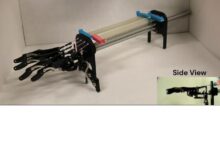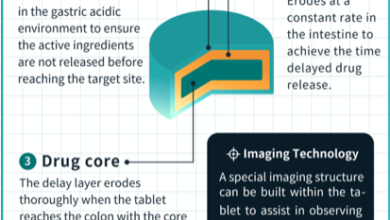
Researchers develop a safety monitoring system for construction sites
[ad_1]
University of Houston computer scientists have developed a new system to keep construction workers safe on the job site. Their findings and processes are set forth in a study published in a research journal Applied Science.
University of Houston computer scientists have developed a new system to keep construction workers safe on the job site. Their findings and processes are set forth in a study published in a research journal Applied Science.
According to the Occupational Safety and Health Administration, 4,764 workers died on the job in 2020. Employees in construction and extraction work accounted for 20% of those deaths. Many have been hit by vehicles or moving machinery at construction sites. Although the construction industry has sought the help of safety experts, a large number of fatalities and injuries still occur.
“The goal of our research project is to improve the safety of workers and equipment on construction sites by tracking their location,” said Alireza Ansaripour, a computer science doctoral student at UH and first author of the study. “By tracking their location, we can monitor site-based policies regarding the safety of workers and equipment at construction sites.”
This site-based safety policy is created during the construction site planning stages such as when an Internal Traffic Control Plan is created. This policy defines safe areas for workers and equipment or defines a safe distance between them when equipment is operating on a construction site. ViPER+ automates this policy monitoring and detects any policy violations while workers and equipment are working.
ViPER+ uses ultra-wideband technology for location tracking. “These radios use a large bandwidth to communicate, which allows them to perform more accurate location tracking compared to other wireless radios,” said Ansaripour. “This is the technology we use to track the location of workers and equipment.”
The team’s ViPER+ system overcomes the challenges of other ultra-wideband based real-time security monitoring systems especially as it tackles non-line of sight situations. This is an instance where trucks, construction loaders and other equipment block the signal between the transmitter and receiver in ultra-wideband radio transmissions.
Ansaripour and his colleagues applied their localization correction method, or location tracking algorithm, to reduce errors caused by non-line of sight.
Testing ViPER+ in the Construction Zone
ViPER+ is an updated and improved version of the group’s initial system ViPER. The biggest difference between the two is ViPER+’s enhanced location tracking, which is more accurate in non-line-of-sight situations.
The team tracks location via tags and anchors. The tag is a small, ultra-wideband radio transmitter, mounted on workers and vehicles to monitor their location. The anchor is an ultra-wideband receiver that receives signals from the tag. The researchers then collected data from the anchors onto their computer servers and estimated the locations of vehicles and people at the construction site.
They tested their system twice in an actual construction zone in Houston that was closed for their experiment. But instead of being real construction workers, the students have to play that role.
“In our evaluation, the four construction workers put up signs. We also have one vehicle, either a truck or a bulldozer with lots of tags on it, and another static vehicle is used to create a non-linear situation.”
The first evaluation was conducted in 2019 when researchers tagged an area of approximately 8,600 square feet called the tracking zone. Four students operate as workers in the tracking zone while Ansaripour manages system data flow and ensures experiments run smoothly. In 2022, a similar scenario is created but at a different construction site.
“Alireza is one of those students with bright ideas and the work ethic to put these ideas into action,” said Omprakash Gnawali, professor of computer science in the UH College of Natural Sciences and Mathematics and a co-author of the study. “Having that combination is important for this technical project to be successful.”
Future Improvements
Future changes to the system include addressing user design issues such as warning construction workers when they get too close to moving machinery.
“We also had problems creating a tracking zone that covered all the construction sites, not just a part of it,” said Ansaripour. “There are still some improvements that need to be made for this to become a commercial product, but our work provides insight into how real-time safety monitoring systems can be used for safety tracking on construction sites.”
Other authors of the study include Milad Heydariaan of UH, and of the University of Nebraska-Lincoln correspondence author Kyungki Kim and Hafiz Oyediran.
This research project was funded through the National Cooperative Highway Research Program (NCHRP) Idea of the National Academy of Sciences under the NCHRP-206 award.
Article title
ViPER+: Vehicle Pose Estimation Using Ultra-Wideband Radio for Automatic Construction Safety Monitoring
Article Publication Date
26-Jan-2023
[ad_2]
Source link






